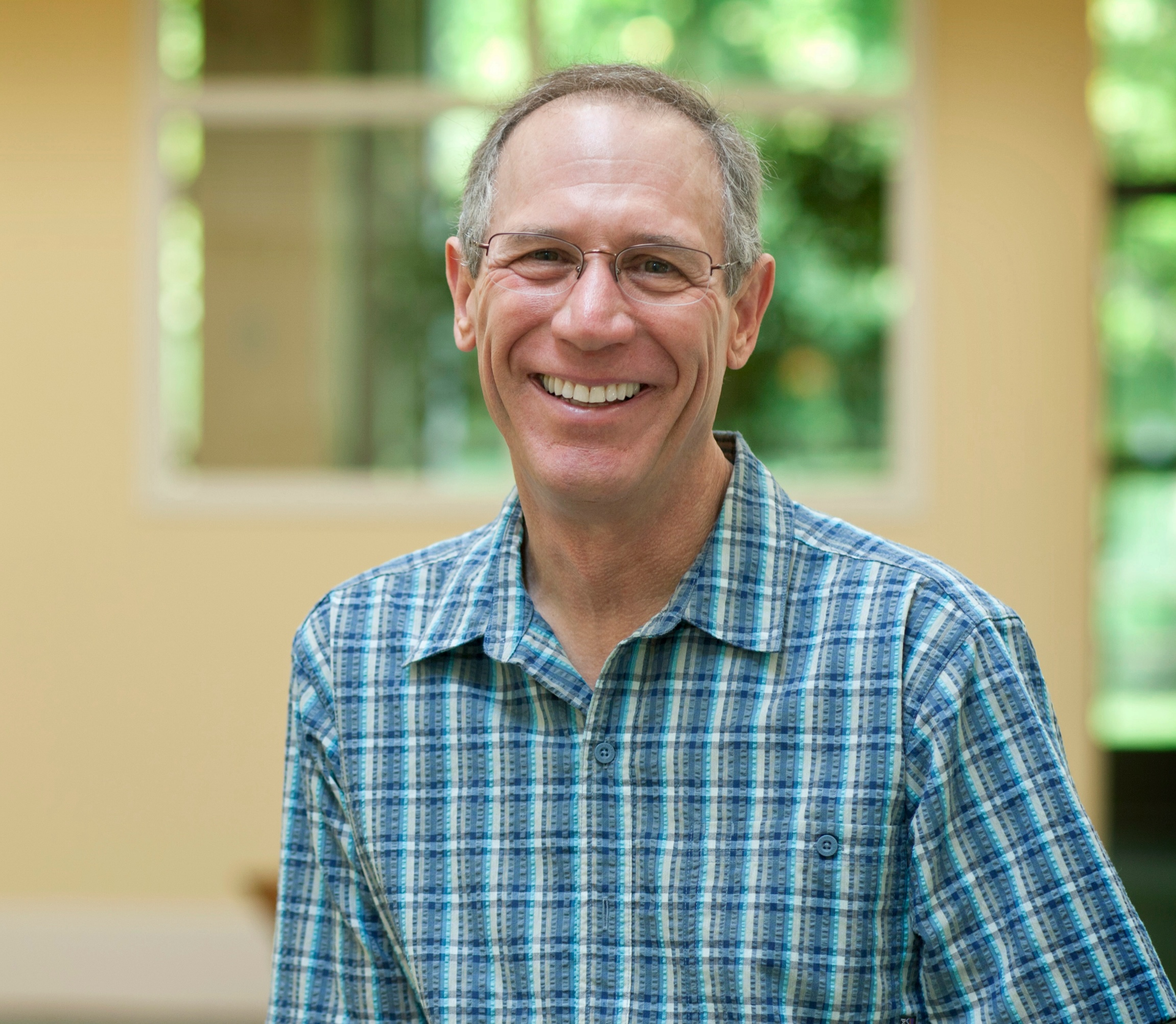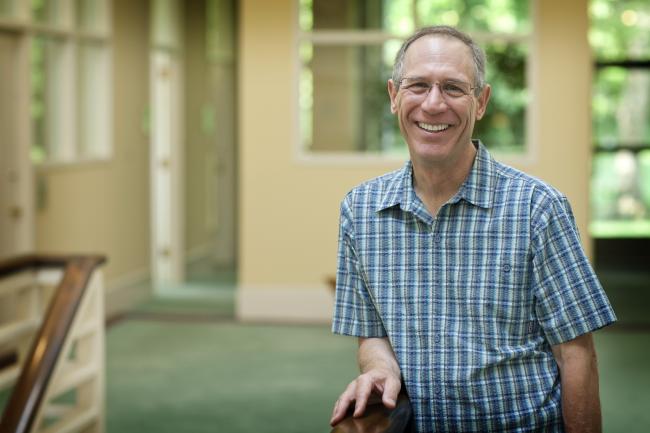Rick Horwitz
Rick Horwitz was the associate vice president for research and biosciences at UVA from 2011 to 2014. During his tenure in this role, he was instrumental in building support for the study of big data at the University, which culminated in the creation of the Data Science Institute.

When Rick Horwitz came to UVA in 1999, he was looking for a new start to his research career. He’d most recently been at the University of Illinois, where he established the Department of Cell Biology, but he was ready to move out of administration.
“It was time to come to a place where I was unknown,” he said, adding that he was ready to set “a new direction” for his research. It would not take long for him to get that opportunity.
Shortly after Horwitz arrived at UVA, the National Institutes of Health launched a major new effort aimed at promoting large-scale, collaborative science. UVA would receive what was known as a “glue grant,” with Horwitz the principal investigator. The grant would fund an international cell migration consortium to better understand the invasion of cells.
The program spanned 10 years, and the research it produced required extensive collaboration across multiple disciplines. It also involved looking at data from a wide variety of sources, which got Horwitz thinking as the work of the consortium wound down: “Could I do something similar to catalyze collaborative research at UVA?"
In 2011, Horwitz moved into a new position — Associate Vice President for Research and Bioscience Programs — with a mission from his new boss, Tom Skalak, the University’s Vice President for Research, that was not without ambition. Skalak challenged Horwitz to “seed creative ideas and stimulate/motivate people to great achievements that were not visible before.”
Thinking back to his experience with the NIH glue grant, Horwitz was drawn to the idea of collaborations across Grounds but in work that went beyond just the biosciences. After pitching his broad, still-developing idea to Skalak, and receiving his blessing to move forward, Horwitz went to work.
“I went out, and I interviewed research deans and faculty,” he said, describing his next steps. “I just found anyone who’s doing quantitative stuff or had data or doing neuroscience,” he said, asking them about their work, their aspirations, and their data.
“Do you have data sets you’re not analyzing,” he recalled asking colleagues. “And if so, why aren’t you doing it? What are the bottlenecks, and what are the opportunities?”
He estimates that he interviewed 50 people. A theme was emerging — data, modeling — but, Horwitz said, Skalak, while supportive, was skeptical that Horwitz’s listening tour was yielding something concrete and actionable.
“There was no beef,” Horwitz said of his efforts at this time. “There wasn’t even a bun yet.”
Don Brown wasn’t sold the first time he spoke to Rick Horwitz about a big data initiative.
“I think I was nice to him,” he said. “But I was skeptical that this was going to lead to anything because I had watched UVA, multiple times, attempt various research initiatives, which had not gone well.”
When he met with Horwitz, Brown was certainly speaking with significant institutional knowledge. A West Point graduate and U.S. Army officer, Brown arrived at the University in 1985 after receiving his Ph.D. from the University of Michigan. In 1996, he became chair of the Department of Systems Engineering, a position he would hold for 12 years.
Early in his tenure at UVA, he was part of a team that received a substantial grant from the U.S. Department of Defense, which would be used to form the Institute for Parallel Computation, a collaboration with colleagues in the Department of Computer Science.
“You could call that sort of an early stab at some of these questions of data science and big data,” Brown said.
Despite his misgivings, Brown continued to meet with Horwitz.
“The thing about Rick,” he said, “was that he gave me a good story about why he thought the timing was right for big data.”
Soon, Brown was on board and their meetings continued, with a core group of around 10 faculty members from different schools across the University discussing what a big data initiative at UVA might look like.
Rick Horwitz and company would also enlist another important ally in John Simon, who took over as the University’s provost in September 2011. Momentum was building.
To gauge interest and bring together people with experience working with big data, plans were made to convene a summit focused on the concept that was developing.
The first Big Data Summit, a seminal event for data science at UVA, was held on May 9, 2012. The half-day gathering featured short presentations followed by panel discussions around the following themes: data producers; infrastructure issues and challenges; analytics and algorithms; and needs, opportunities, challenges, and next steps.
The overarching theme, though, was a clarion call to attendees to think creatively and without a preconceived notion of where this idea was headed: “Data, data everywhere without a plan in sight.”
By any measure, the summit was a success.
“It was just absolutely amazing,” said Horwitz. “It was beyond our expectations.”
“We were totally surprised,” said Don Brown of the interest and attendance, saying that they initially expected 60 to 80 faculty participants, not the 170 who attended from 32 departments.
“Far more than I anticipated,” Teresa Sullivan said.
The enthusiasm coming out of the first Big Data Summit, however, was marred, at least temporarily, by the forced resignation of Sullivan in June.
“It was devastating,” said Horwitz. After widespread protests, though, Sullivan was reinstated, and data science had its champion back in the president’s office.
In May 2013, a second Big Data Summit was held, with opening remarks from Brown, Sullivan, and Horwitz. The topics for this gathering showed the vast potential of data science to touch on a diverse range of disciplines and policies. Sessions focused on humanities, social sciences, and the arts; physical sciences and engineering; and biosciences and medicine.
There was no denying by the summer of 2013 that the time for big data at UVA had arrived; the next step was turning this vision into something concrete.
Sullivan asked Horwitz to present and promote the emerging concept around data science and a UVA institute at an early August retreat of UVA’s Board of Visitors. Their response was overwhelmingly positive, and they encouraged the group to move forward quickly with their plans.
At the same time that UVA leaders were organizing summits and making the case for an institute, alumni such as Jaffray Woodriff were independently advocating for the University to lead in data science.
In 2012, a few moments occurred in quick succession as efforts at UVA to push big data to the forefront were ongoing.
A much larger, national spotlight began to shine on the issue. First, major national media outlets would take notice, including an in-depth look by The New York Times, which christened the era “The Age of Big Data.”
Then, the Obama administration put the weight of the White House behind the issue, unveiling the “Big Data Research and Development Initiative” in March 2012.
“In the same way that past Federal investments in information-technology R&D led to dramatic advances in supercomputing and the creation of the Internet, the initiative we are launching today promises to transform our ability to use Big Data for scientific discovery, environmental and biomedical research, education, and national security,” said John Holden, director of the White House Office of Science and Technology Policy, in a statement announcing the effort.
While these events helped galvanize outside interest, Sullivan notes that efforts at the University were well underway.
“We’ve been thinking along these lines already, so I don’t think we reacted particularly to the outside interest,” she said. “We had our own internal dynamic underway already.”
In fact, there were two internal dynamics. While Rick Horwitz and his group were developing their ideas, Sullivan was proceeding on a parallel path.
After arriving at UVA, she was invited to join the Business-Higher Education Forum, a group that convenes senior high education officials and CEOs to discuss trends. Not long after joining, she participated in a session on data science. She recalls CEOs describing how, increasingly, job candidates did not have the skills that were required, adding that they thought they would soon need to outsource positions due a lack of needed talent in the U.S. — a potentially “alarming” development, Sullivan recalled.
Around the same time, she met with Robert Groves, director of the U.S. Census Bureau, who told her that it was critically important that college graduates not just be data literate but also be able to work with very large datasets.
Sullivan would soon meet and begin talking with Horwitz: “We were both on the same track — we just didn’t know it,” Sullivan said.
Horwitz, Don Brown, and their colleagues no longer needed to worry about finding a champion in the president’s office for data science. “I was actually prepared to sell them,” Sullivan said.



